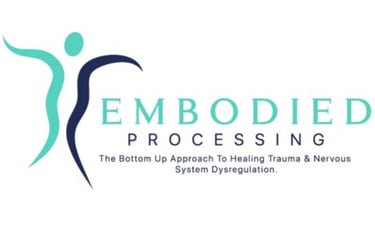Mind Body Syndrome | TMS | PPD
What is Mind body syndydrome?
Mind body Syndrome (MBS), also known as: Musculoskeletal Mindbody Syndrome (MMS), Distraction Syndrome, neuroplastic pain, Psychophysiologic disorder (PPD) Psychosomatic Syndrome, or Tension Myositis Syndrome (TMS), is a psychophysiological phenomenon pioneered by Dr John Sarno.
Let me start by explaining that this does NOT mean it is all "in your mind" or that you are weak, or you have created the problem yourself. Your pain (or other symptoms) IS REAL - all pain is real. However persistent pain is not exclusively of biological origin, rather, there is growing evidence to suggest that learned neural pathways in the brain cause many forms of chronic pain and NOT structural problems in the body.
Dr Sarno theorised that pain is a physical manifestation of suppressed emotions. A ploy by the brain to distract oneself from challenging emotions and prevent their conscious expression. Also, sometimes an acute injury occurs, yet the pain continues after the tissues have fully healed as the pain neural pathways have been learnt and the fear of pain continues.


Diagnoses commonly due to psychophysiological processes
Acid reflux
Anxiety
Back pain
Chronic abdominal and pelvic pain syndromes
Chronic fatigue syndrome
Chronic hives
Chronic tendonitis
Depression
Dizziness
Eating disorders
Fibromyalgia
Foot pain syndrome
Gastrointestinal issues
Heartburn
Hypersensitivity syndromes (touch, sound, smells, foods, medications)
Inappropriate sinus tachycardia
Insomnia
Interstitial cystitis (irritable bladder syndrome)
Irritable bowel syndrome
Migraines
Myofascial pain syndrome
Neck pain
Obsessive-compulsive disorder
Parasthesias (numbness, tingling, burning)
Piriformis syndrome
Plantar fasciitis
Post-traumatic stress disorder
Postural orthostatic tachycardia syndrome (POTS)
Reflex sympathetic dystrophy (complex regional pain syndrome)
Repetitive strain injury
Sciatic pain syndrome
Spasmodic dysphonia
Substance use disorders
Temporomandibular joint (TMJ) syndrome
Tension headaches
Tinnitus
Vulvodynia
Whiplash
Causes of chronic pain and other symptoms
Pain is a danger signal. If you put your hand on a hot stove, the pain lets you know to move your hand so that you don’t injure yourself further. But sometimes, these danger signals can get activated even in the absence of structural damage. Recent research shows that learned neural pathways in the brain cause many forms of chronic pain and NOT structural problems in the body.
It can occur sometimes when there has been an injury. When there is acute tissue damage, the brain creates pain pathways. But the brain doesn’t simply forget these pathways once the injury has healed. So, the body can heal, but the pain pathways in the brain are still there and can still cause pain.
We have nerve fibers that send messages to our brains. These messages are interpreted by your brain based upon information such as your emotional state, past experiences, and current situation. Your brain can misinterpret these messages as dangerous when they're not and amplifying the sensation.
Stress and it's affect on the mind-body
Everyone knows about stress. It is part of life. Some stress is good for you; it keeps you on your toes and drives you to do fun, interesting and important things in life.
However, ongoing or long-term stress (chronic stress) can often lead to health problems or make physical or mental health conditions worse. Most of us know and accept that headaches can be caused by stress but what many people do not realise is that stress can also cause a whole range of other symptoms in the body. These can be just as severe as those caused by other types of illness and can include pain, muscle tension, fatigue, brain fog, anxiety and digestive issues.
When under pressure, the brain sends messages to the body through neural pathways eg. blushing when embarrassed or tensing shoulders when anxious. This can also result in pain or other symptoms, such as an upset stomach, dizziness, skin rashes, headaches, or fatigue. The neural pathways connecting the brain with the site of the pain or symptom can become learned and sensitised, making the symptom persistently active and easily triggered. This often occurs when treatments focus only on the pain or symptoms rather than addressing the underlying causes.
Evidence that pain and other symptoms are stress-induced
Numerous studies indicate that stress can cause unexplained symptoms. For instance, a study of over 2800 employees from 28 organizations showed poor management was the main predictor of back pain, not physical reasons. Evidence also shows that persistent pain is linked to depressed mood, anxiety, loss of hope, early beliefs that pain might be permanent, and exposure to past trauma, rather than injury severity.
Could you have MBS | TMS | PPD?
When diagnosing neuroplastic pain, we want to rule out anything caused by a physical injury. A physical injury will obviously cause you pain, but injuries generally heal within about 3 months.
If your pain has occurred longer than 3 months, your doctor can examine you and do tests to find out if your symptoms are related to organ disease or other types of tissue damage. If these tests fail to find a physical cause, the doctor may consider your symptoms to be ‘medically unexplained’. According to the NHS website, up to 45% of visits to GP surgeries in the UK and half of all new visits to hospital clinics, are for ‘medically unexplained symptoms’. The vast majority of these are likely to be stress related.
Please also read the Pain Facts before interpreting any MRI results of wear and tear of the bones or apparent physical causes given to you by clinicians, as most are not trained in the recent science of pain as it is not taught in medical school. I was told that my MRI scans showed wear and tear and I was diagnosed with chondromalacea patella, however pain does NOT correlate with bone abnormalities or degeneration. Neuroplastic pain is very good at mimicking structurally caused pain. My knee pain felt like it was caused by wear and tear on my kneecaps. Physiotherapists, osteopaths and chiropractors also found other "evidence" of a physical problem - I had many different reasons given to me by different practitioners: I was told my knees weren't tracking correctly, that I had crepitus, weak muscles, hip misalignment, tight IT bands... (the list goes on!). None of this was the cause of my pain and all the exercises and massage under the sun only gave mild temporary relief at best.
The best way to find out if your symptoms could be caused by stress and neural pathways in the brain is to check with a trained SIRPA professional. Why not contact me for a full assessment to get an expert opinion on the cause of your pain?






TMS, PPD, Mind-Body Syndrome, Perceived Danger Pain, Neuroplastic Pain Syndrome, Chronic Pain Recovery Practitioner in Horley, Surrey, UK and Online Internationally. (English speaking only).
